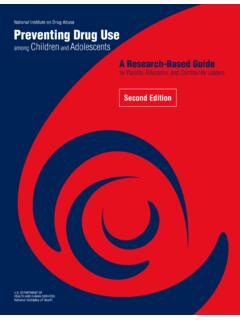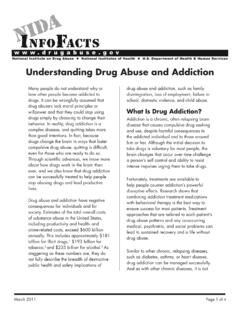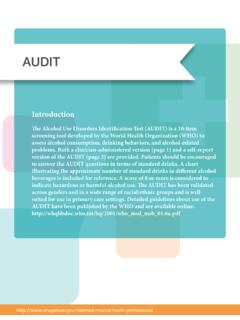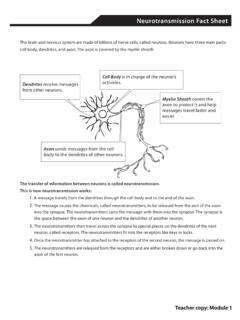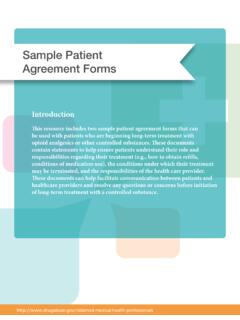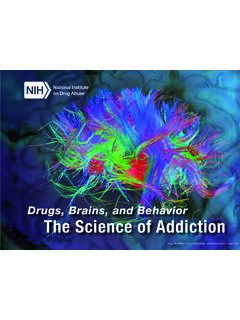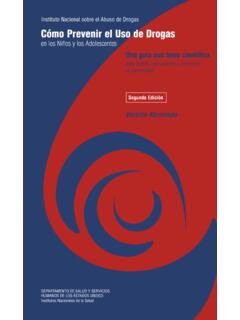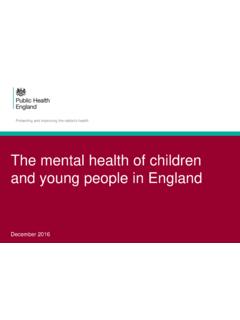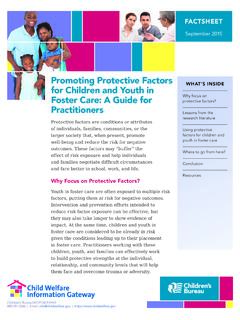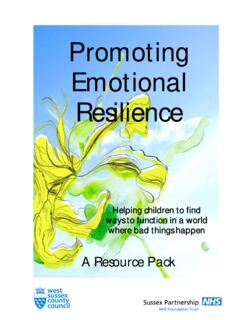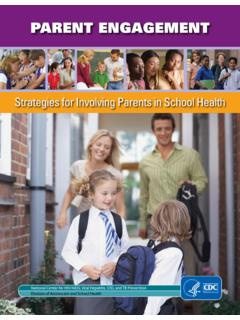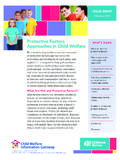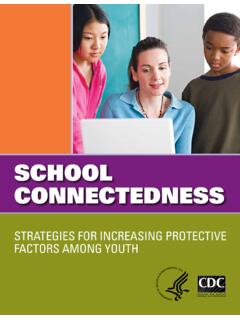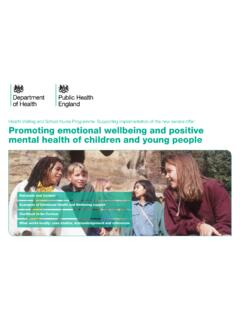Transcription of Preventing Drug Use Among Children and Adolescents …
1 Preventing drug Use Among Children and AdolescentsNational Institute on drug AbuseKaren L.
2 Bierman, Pennsylvania State UniversityC. Hendricks Brown, University of South Florida Richard R. Clayton, University of KentuckyThomas J. Dishion, University of OregonE. Michael Foster, Pennsylvania State UniversityMeyer D. Glantz, National Institute on drug AbuseMark T. Greenberg, Pennsylvania State University Hyman Hops, Oregon Research InstituteEugene R. Oetting, Colorado State UniversityZili Sloboda, University of AkronRichard Spoth, Iowa State UniversityJohn B.
3 Reid, Oregon Social Learning CenterThomas A. Wills, Albert Einstein College of MedicineNIDA also would like to thank the Community Anti- drug Coalitions of America for helping organize a focus group of community leaders in reviewing this publication was written by Elizabeth B. Robertson, , Susan L. David, (retired), and Suman A. Rao, , National Institute on drug materials in this volume are in the public domain and may be used or reproduced without permission from NIDA or the authors. Citation of the source is government does not endorse or favor any specific commercial product or company.
4 Trade, proprietary, or company names appearing in the publication are used only because they are considered essential in the context of the studies described Publication No. 04-4212(A) Printed 1997 Reprinted 1997, 1999, 2001 Second Edition October 2003 NIDA wishes to thank the following individuals for their guidance and comments during the development and review of this publication:AcknowledgmentsiiPreventing drug Use Among Children and AdolescentsNational Institute on drug AbuseAcknowledgments iiPreface vIntroduction 1 Prevention Principles 2 Chapter 1.
5 Risk factors and protective factors 6 What are risk factors and protective factors ? 6 What are the early signs of risk that may predict later drug abuse? 8 What are the highest risk periods for drug abuse Among youth? 9 When and how does drug abuse start and progress? 10 Chapter 2: Planning for drug Abuse Prevention in the Community 12 How can the community develop a plan for research-based prevention? 12 How can the community use the prevention principles in prevention planning?
6 12 How can the community assess the level of risk for drug abuse? 14 Is the community ready for prevention? 15 How can the community be motivated to implement research-based prevention programs? 16 How can the community assess the effectiveness of current prevention efforts? 17 Chapter 3: Applying Prevention Principles to drug Abuse Prevention Programs 18 How are risk and protective factors addressed in prevention programs? 18 What are the core elements of effective research-based prevention programs?
7 21 How can the community implement and sustain effective prevention programs? 24 How can the community evaluate the impact of its program on drug abuse? 24 What are the cost-benefits of community prevention programs? 25 ContentsiiiivPreventing drug Use Among Children and AdolescentsNational Institute on drug AbuseChapter 4: Examples of Research-Based drug Abuse Prevention Programs 26 Universal Programs 26 Elementary School Caring School Community Program Classroom-Centered (CC) and Family-School Partnership (FSP) Intervention Promoting Alternative Thinking Strategies (PATHS) Skills, Opportunity, And Recognition (SOAR) Middle School Guiding Good Choices Life Skills Training (LST) Program Lions-Quest Skills for Adolescence (SFA) Project ALERT Project STAR The Strengthening Families Program.
8 For Parents and Youth 10 14 (SFP 10 14) High School Life Skills Training: Booster Program Lions-Quest Skills for Adolescence Project ALERT Plus The Strengthening Families Program: For Parents and Youth 10 14 Selective Programs 31 Elementary School Focus on Families (FOF) The Strengthening Families Program (SFP) Middle School Coping Power High School Adolescents Training and Learning to Avoid Steroids (ATLAS) Indicated Programs 33 High School Project Towards No drug Abuse (Project TND) Reconnecting Youth Program (RY)
9 Tiered Programs 34 Elementary School Early Risers Skills for Success Risk Prevention Program Fast Track Prevention Trial for Conduct Problems Middle School Adolescent Transitions Program (ATP) Chapter 5: Selected Resources and References 36 Selected Resources 36 Selected References 38ivPreventing drug Use Among Children and AdolescentsNational Institute on drug AbusePrefacevToday s youth face many risks, including drug abuse, violence, and HIV/AIDS.
10 Responding to these risks before they become problems can be difficult. One of the goals of the National Institute on drug Abuse (NIDA) is to help the public understand the causes of drug abuse and to prevent its onset. drug abuse has serious consequences in our homes, schools, and communities. From NIDA s perspective, the use of all illicit drugs and the inappropriate use of licit drugs is considered drug science has made great progress in recent years. Many prevention interventions are being tested in real-world settings so they can be more easily adapted for community use.
